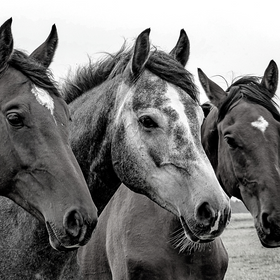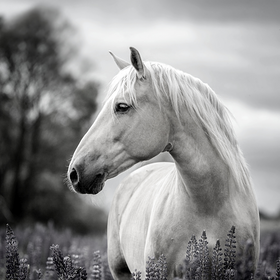
Hay Types 101
Do you know what hay types you are feeding your horses and what benefits each kind has for their nutritional health? As a horse owner, it’s essential to understand the basic hay types, feeding plans, nutritional values, and cost for each. This breakdown will give you the resources on hay types so you can create a feeding plan that works for your horse’s lifestyle and diet needs, as well as your wallet. If you are unsure of the best diet for your horse, consult your veterinarian for recommendations.
Hay Feeding Tips
Every horse will have individual nutrition requirements depending on geographical location, workload, and living situation. Genes can also play a role in nutritional needs and amount of feed; easy keepers versus hard keepers. Here are a few general guidelines for feeding horses:
- Always make dietary changes slowly to reduce the risk of GI upset and colic.
- Get your hay tested if you are unsure of the nutritional value.
- Research sources - whether a feed supply store or local farmer
- Feed your oldest hay first
- Always keep hay dry and away from pests
- Avoid feeding hay on sandy ground (this leads to sand consumption and possible colic)
- NEVER feed moldy hay
Bermuda Grass
Bermuda is budget-friendly hay in most areas. It is often less expensive compared to Timothy or Orchard. Bermuda grass contains reasonable amounts of vitamins A and D, as well as calcium and phosphorus. This is a good choice for easy keepers and horses not in heavy work. Compared to other types of hay, Bermuda has a lower nutritional value and, therefore, is not recommended for horses with high protein requirements. If this is your only choice of hay and your horse has higher protein requirements, you will need to supplement with a higher protein grain.
Timothy Hay
Timothy grass is one of the most digestible hays for horses. Due to its high digestibility, it is a good choice for older horses. The low protein, high fiber content makes it good general hay for horses ridden once or twice per week. Some horse owners have noted shinier coats, better digestion, and bowel regularity when feeding Timothy over other types of hay.
Clover
Clover is a legume often contained in mixed hay. Clover is a good source of protein and fiber for horses. However, it should be mixed with other hay types because most horses do not need a high protein diet. Clover is prone to molding easily when wet. It is essential to keep hay containing Clover very dry. If a horse consumes moldy Clover, they will experience slobbers, light reactivity, and possible bleeding.
Alfalfa
Alfalfa is a legume and contains higher protein and essential nutrients compared to Timothy and Bermuda grasses. Alfalfa is a good option for active horses and pregnant mares who need higher protein diets. Sport horses are also often fed Alfalfa for higher protein and calories. This type of hay exceeds the nutrient requirements for most horses and can be mixed with other grasses like Timothy and Bermuda for a more balanced diet.

Please remember to always consult with your veterinarian before changing your horse's feed. Switching their hay type should be done slowly and under a watchful eye. If you notice decreased appetite, loose manure, or signs of colic, contact your veterinarian and consider halting your feed transition.
As always, happy riding!





